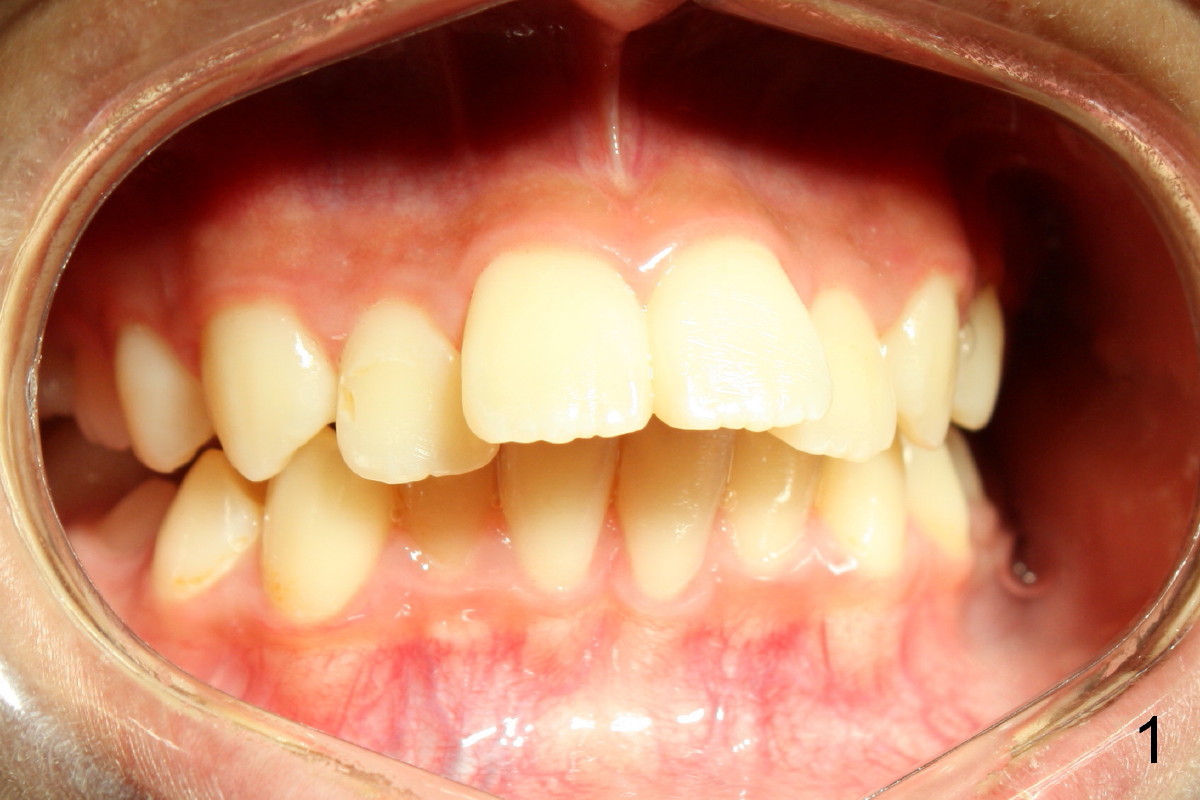
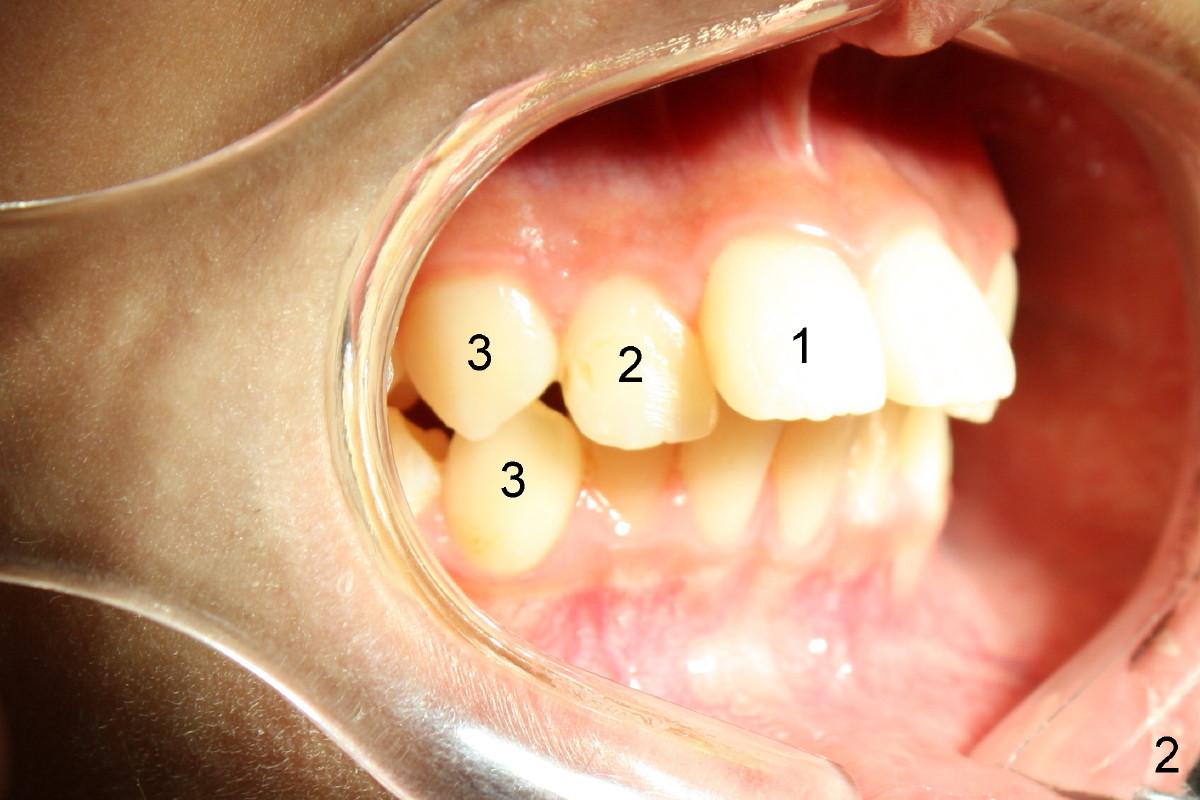
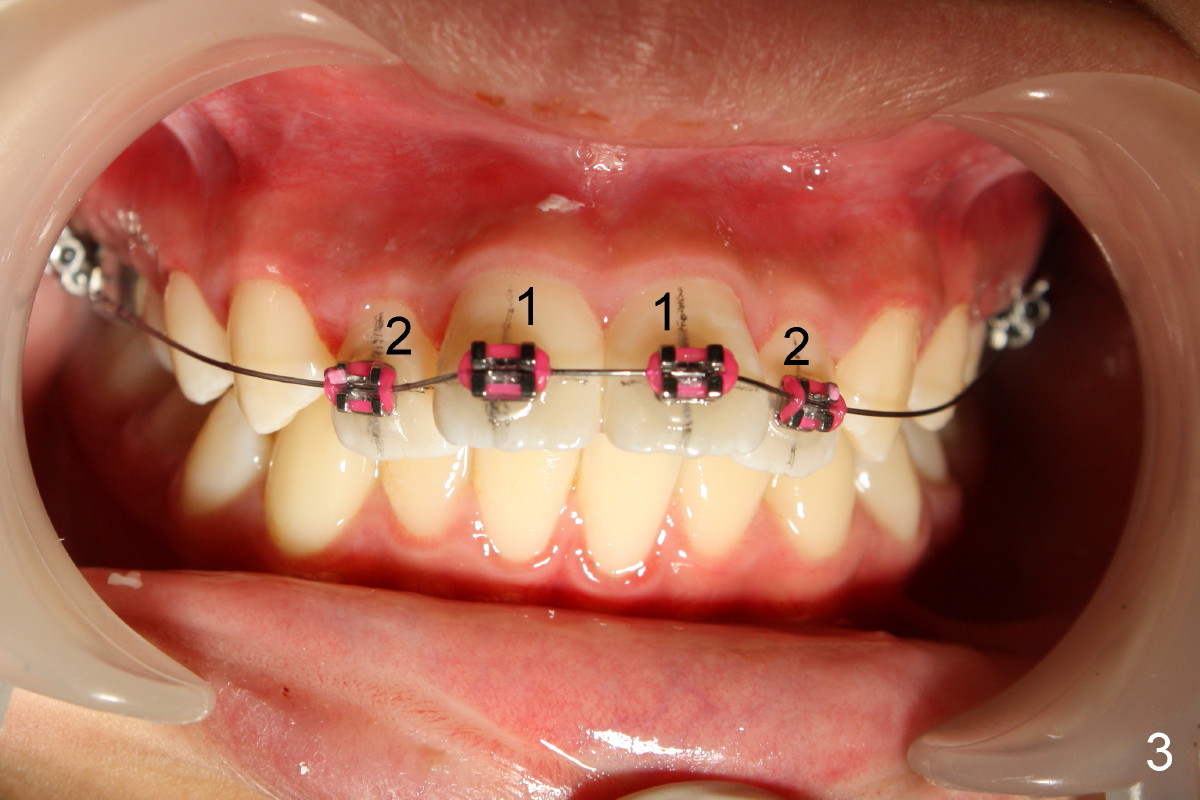
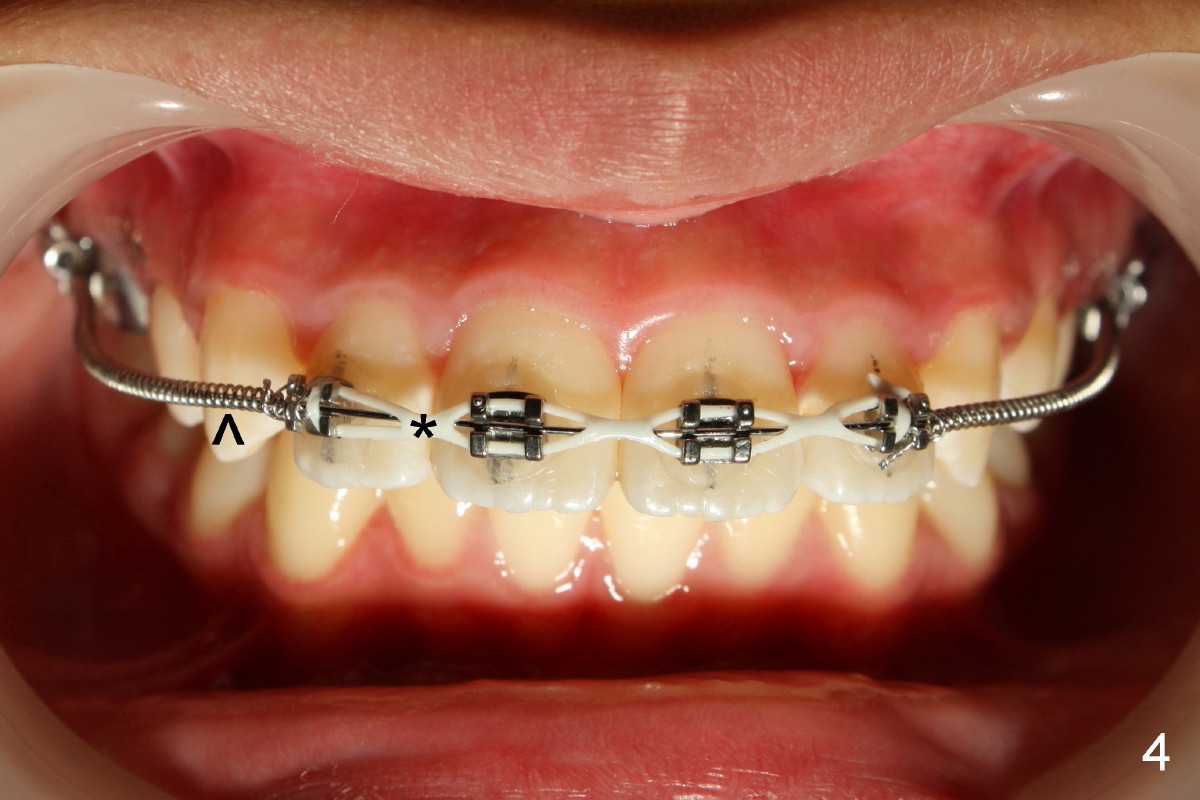
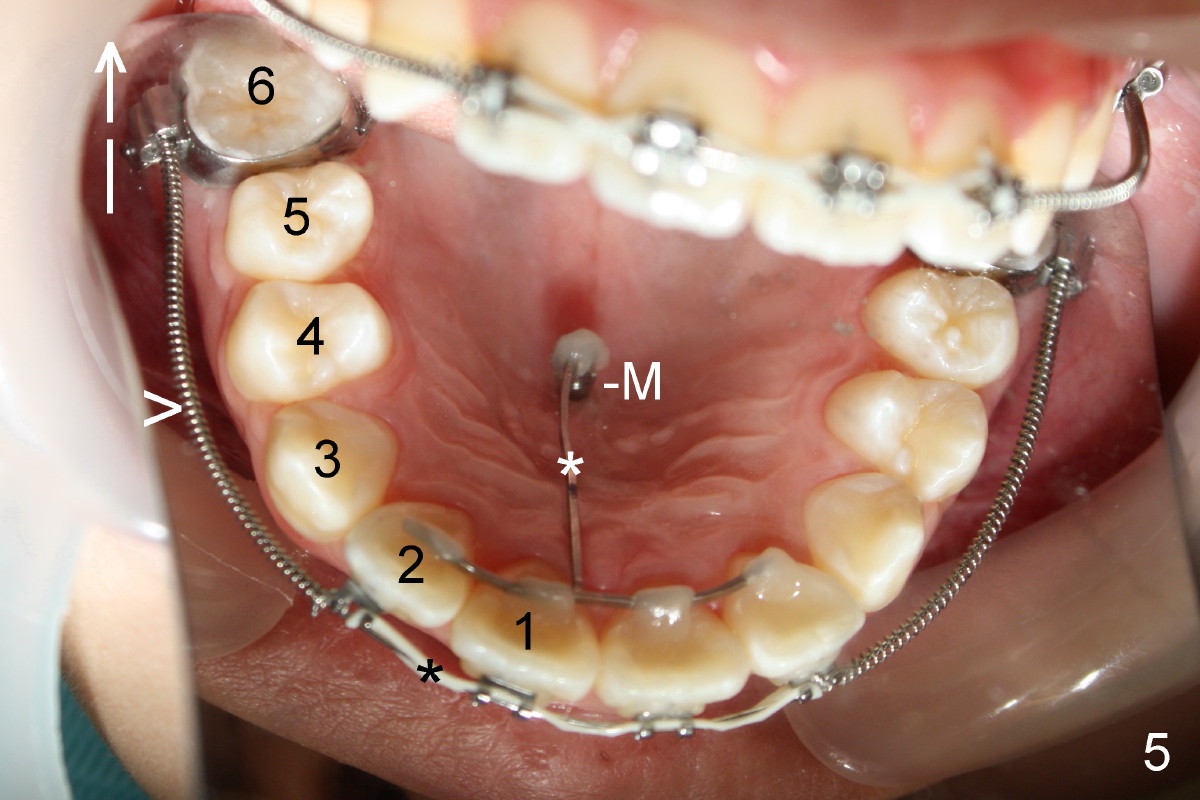
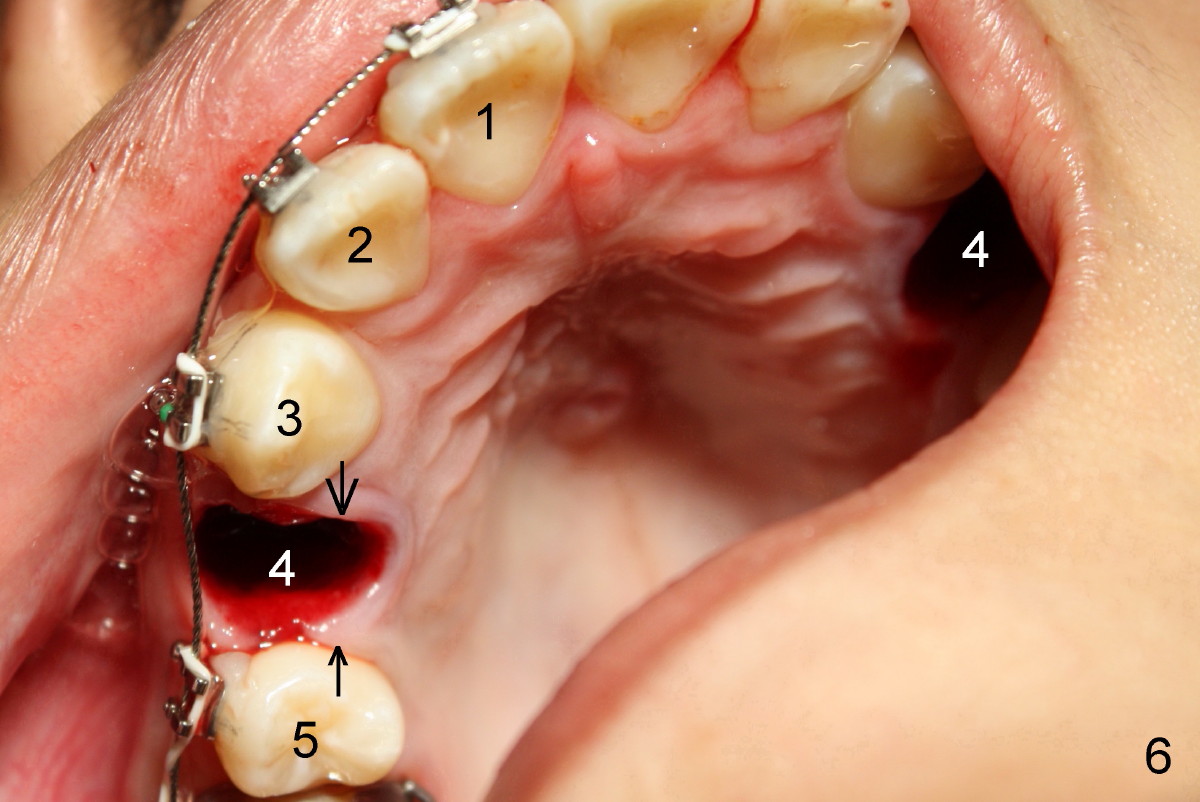
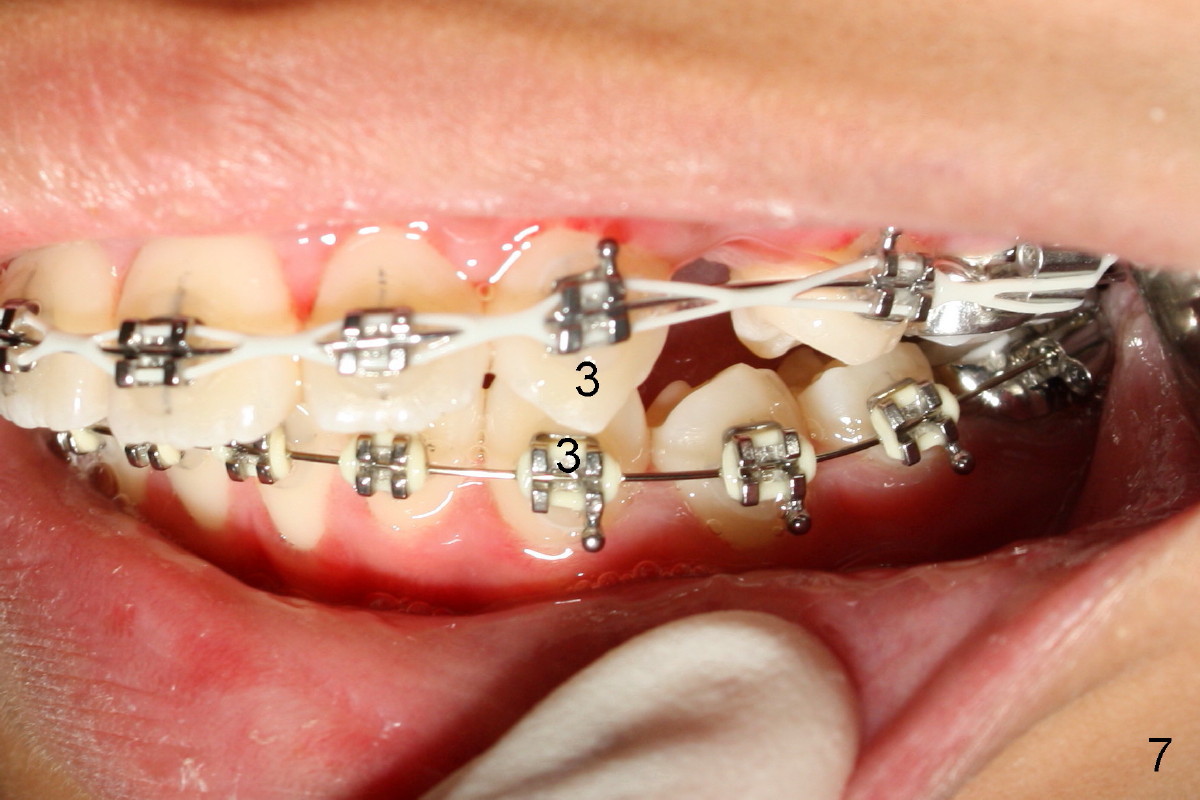
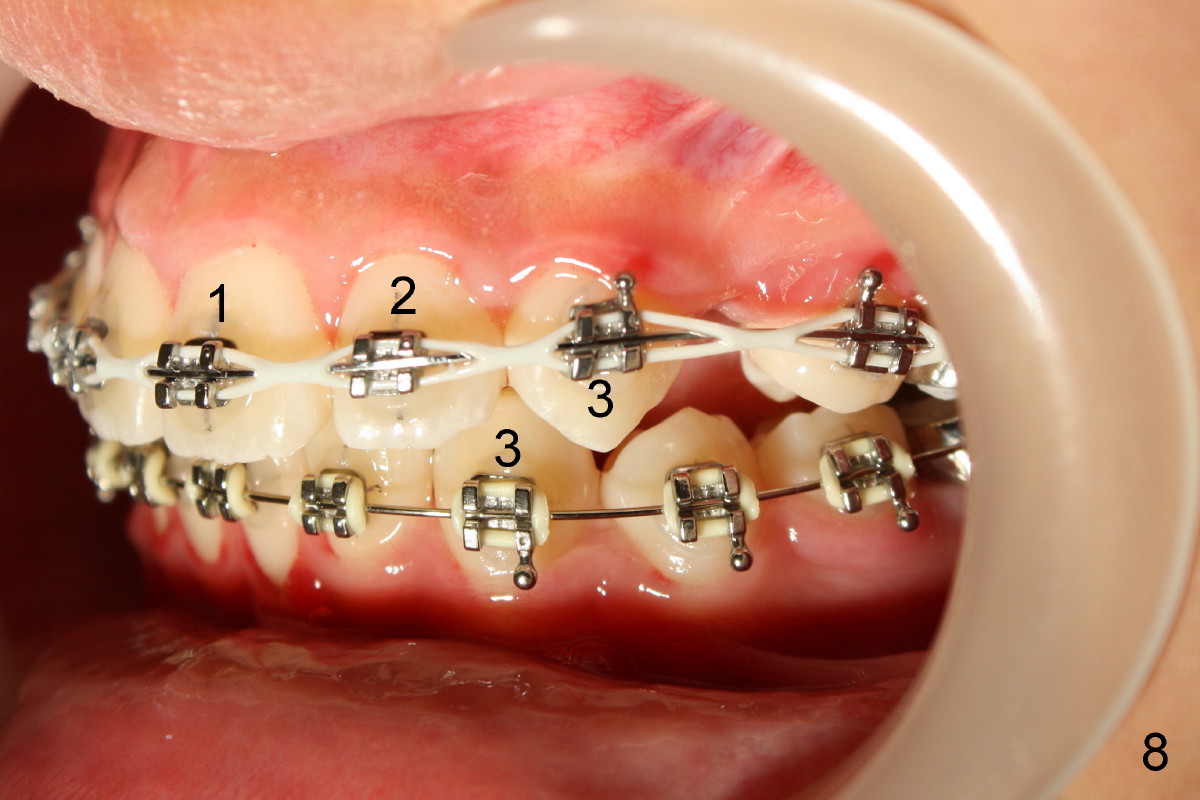
 |
 |
 |
 |
 |
 |
 |
 |
Extraction or Not?
When crooked teeth are severe, extraction of a few of teeth may be needed. But it is a tough decision. Christina's upper teeth are so big and so forward positioned that extraction is imminent (Fig.1 front view, Fig.2 side view). Normally the top canine (Fig. 8: 3) should be behind the lower one (3). In contrast, Christina's top canine (3 in Fig.2) is almost in the same line as the bottom one (3) so that the two top front teeth look too protrusive (1,2). Even so her mom wants to avoid the extraction option as much as possible.
So non-extraction mode is tried first: braces being placed in four front teeth (Fig.3: 2,1,1,2) and two back teeth. The wire going through braces is so twisted that it looks like a roller coaster track. Two months later, the wire and front teeth are straightened (Fig.4). A white rubber band ties these four front teeth together (*). On either side of the teeth a long stretch of spring (arrowhead: ^) is placed over the wire, trying to push the back teeth backward. Fig.5 is a mirror image of the upper jaw (palate). In addition to the rubber band in the front (black *), a mini-implant (M) and T-bar (white *) are used to hold the front teeth as a solid unit (anchorage. fixed point). A spring (>) is used to push the back tooth (6) backward (-->). When the tooth #6 is moved backward enough, a new brace will be place on the tooth #5 (not shown). The tooth is to be pushed back in the same way. So forth and so on for the teeth #4 and then #3. Last the teeth #3-6 are tied together as an anchorage in the back to drag the 4 front teeth backward (2,1,1,2). This is a long process, but has to be tried.
In 2 months, this conservative method does not work. Christina's mom suggests a change in treatment plan. Two teeth are extracted (Fig.6: #4). A long rubber band will be used to push all of the front teeth backward (1-3), while pull all the back teeth forward (->, i.e., to close the extraction gap). Fig.7 is a side view, showing a long white rubber band in action after extraction. At this time, the top canine (3) is on the top of the bottom canine (3). The alignment is not right as mentioned above. In one month, the alignment improves dramatically (Fig.8). In all, extraction sometimes makes orthodontic treatment much easier.
Xin Wei, DDS, PhD, MS 1st edition 07/20/2012, last revision 07/21/2012